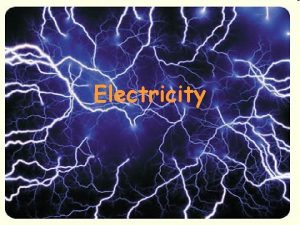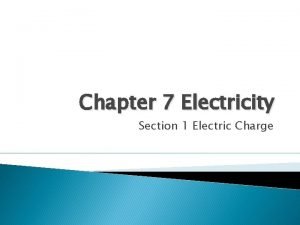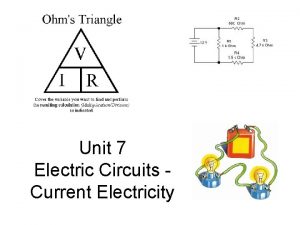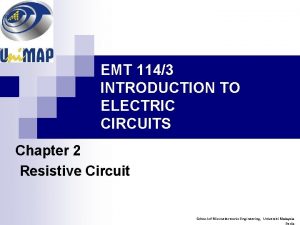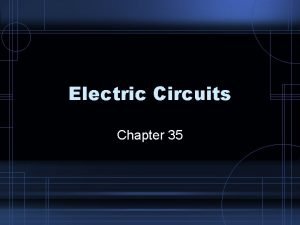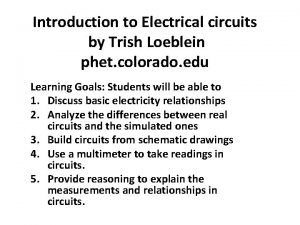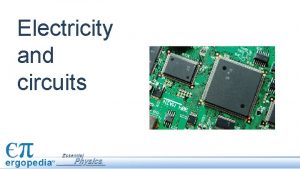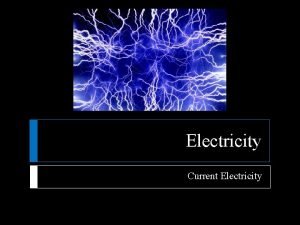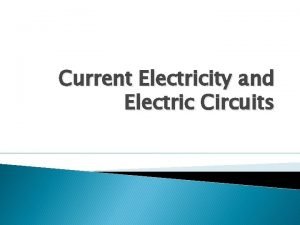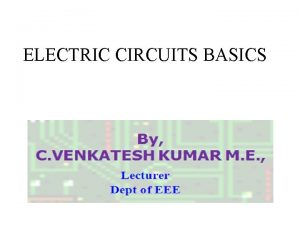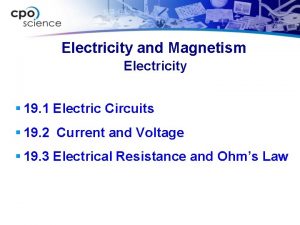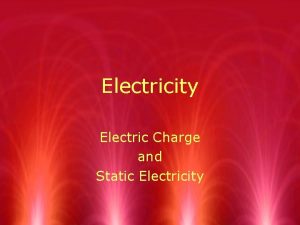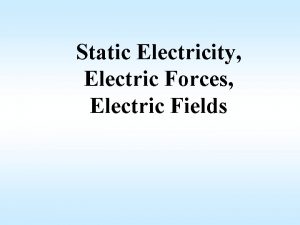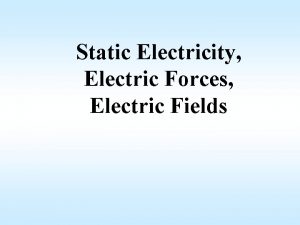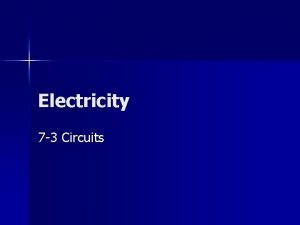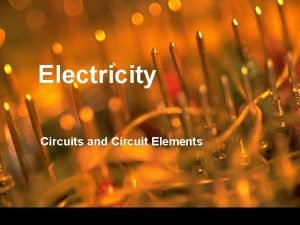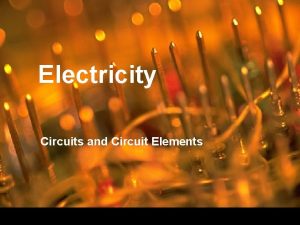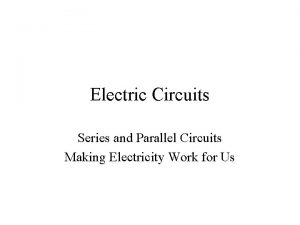Electricity Electric Circuits 13 1 Electric Circuits 13

















- Slides: 17

Electricity Electric Circuits • 13. 1 Electric Circuits • 13. 2 Current and Voltage • 13. 3 Resistance and Ohm's Law

13 A Investigation: Electricity Key Questions: What is electricity? How is electricity measured and described? What is a circuit?

13 A Investigation Topics • • • Identify conductors and insulators. Measure voltage in a battery. Measure current in a circuit. Draw circuit diagrams. Investigate how a dimmer switch works.

Chapter 13. 1 Objectives and Vocabulary • Explain how electrical energy is supplied to devices in a circuit. • Use electrical symbols to draw simple circuit diagrams. • Distinguish between open and closed circuits. • • electric current electric circuit diagram electrical symbols resistor closed circuit open circuit switch




Chapter 13. 2 Objectives and Vocabulary • List the units used to measure current and voltage. • Describe how to measure current and voltage in a circuit. • Explain the function of a battery in a circuit. • • ampere voltage voltmeter multimeter battery ammeter



13 B Investigation: Resistance and Ohm's Law Key Questions: What is the relationship between current, voltage and resistance? How does a potentiometer work? What is voltage drop and what does it tell you about where the electrical energy carried by the current is going?

13 B Investigation Topics • Measure resistance in a circuit. • Use Ohm's law to identify the mystery resistor in a circuit. • Investigate how a potentiometer works. • Investigate the relationship between voltage drop across the potentiometer and voltage drop across the bulb in a circuit.

Chapter 13. 3 Objectives and Vocabulary • Explain the relationships between current, voltage and resistance. • Use Ohm's law to calculate current, resistance, or voltage. • Distinguish between conductors and insulators. • • resistance ohm Ohm's law conductor insulator semiconductor potentiometer



Do We Understand Simple Series Circuits? Problem #1 A circuit is made of a 48 v battery and three resistors connected in series. R 1 has a resistance of 2 Ω, R 2 has a resistance of 4 Ω, and R 3 has a resistance of 6 Ω. A) Draw the circuit diagram. B) Find the total resistance. C) Find the circuit current. D) Find V 1, V 2, and V 3.

• Problem #2 • A circuit is made of a 60 volt battery and three resistors connected in series. R 1 has a resistance of 5 Ω, R 2 has a resistance of 10 Ω, and R 3 has a resistance of 15 Ω. • A) Draw the circuit diagram. • B) Find the total resistance. • C) Find the circuit current. • D) Find V 1, V 2, and V 3.
 Static electricity and current electricity
Static electricity and current electricity Current electricity gif
Current electricity gif How are static electricity and current electricity alike
How are static electricity and current electricity alike Current in a parallel circuit
Current in a parallel circuit Chapter 6 electricity section 1 electric charge answers
Chapter 6 electricity section 1 electric charge answers Electricity section 1 electric charge
Electricity section 1 electric charge Electricity section 1 electric charge
Electricity section 1 electric charge Electric circuits
Electric circuits Conceptual physics chapter 35 electric circuits
Conceptual physics chapter 35 electric circuits Introduction to electric circuits
Introduction to electric circuits Elec 202
Elec 202 Chapter 35 electric circuits answers
Chapter 35 electric circuits answers Fundamentals of electric circuits chapter 7 solutions
Fundamentals of electric circuits chapter 7 solutions Analogy between electric and magnetic circuits
Analogy between electric and magnetic circuits Chapter 35 electric circuits
Chapter 35 electric circuits Phet circuit
Phet circuit What are the three elements of electricity
What are the three elements of electricity Chapter 20 electric circuits
Chapter 20 electric circuits





